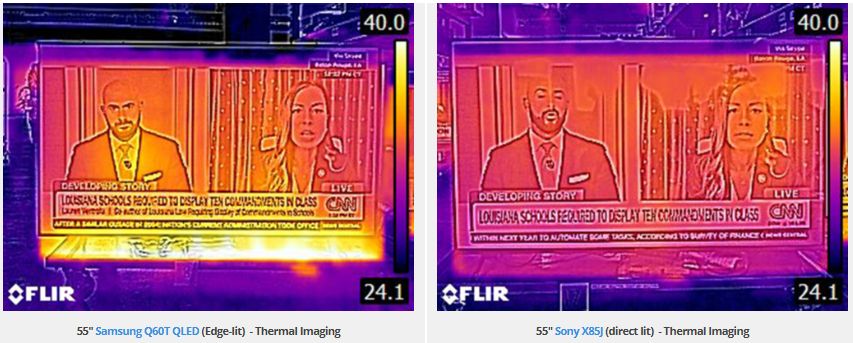As for why EL LCDs still exist since they seem to require extreme heatsinking to keep the LEDs from melting straight through the LCD? RTINGS figures it’s because EL allows for LCD TVs to be thinner, allowing them to compete with OLEDs while selling at a premium compared to even FALD LCDs.
People need to stop buying the thinnest thing.
People need to stop buying the thinnest thing
Yeah, I think one of the problems is that thin is a familiar and commonly reported spec for a display. If MTTF were reported — and it should be! — then I think the problem would sort itself out.
Do people buy the thinnest thing? Laptops or phones maybe to some extent, but TVs I sincerely doubt.
And having gotten to interact with the real process of product development, I gotta say in my (relatively narrow) experience it’s based a lot more on vibes/politics than market research or focus groups.
I can totally see “make it as thin as XYZ” being a hard requirement for no better reason than a PM felt strongly about it, and no-one had all three infinity stones necessary to call them out (engineering knowledge, understanding of the PD pipeline, and political capital).
I have a 2018 OLED, and the ratio of comments by guests about thinness vs picture quality is 3:1.
Try to turn up the contrast and saturation to 200 %, that should increase the comments on picture quality :)
FR tho, mine is also impressively thin but like… I discovered that when I unpacked it? Thinness is not effectively conveyed by marketing material, and maybe it’s because I haven’t set foot in an electronics store in years but aren’t TVs typically laid out in a way that you don’t see them from the side?
Maybe I’m totally off-base and it truly is a big factor for normies shopping for a TV, but I just can’t even really understand how a 3 cm thick panel would significantly impact sales compared to panel tech, size, cost, and ancillary features.
However now that I think about it, maybe “thick” LCDs can’t go bezel-less? That I could easily understand how it impacts the overall esthetics (or even practicality with respect to Ambilight for instance).
Then ruins oleds too. Oled need giant heat sinks to work properly, but they’ve been being very thin and having plastic bags so they can look sleek. It’s especially obnoxious because full array LCDs and uniform thickness OLED are much thinner than the protruding bulge that comes out on most super thin TVs.
Meh, if you want a thin TV, just get an OLED, it’s what that technology was designed for.
That’s what she said.
I’ve never really been a fan of thin technology like this. Even laptops, the hardware needs room to breath. I’d rather have a thicker TV so it can breath. Just like the firetv sticks, those things really heat up.
It’s the only way to stand out in the store.
Don’t run them at full brightness and you should be ok.
And also avoid using HDR
Also it’s edge lit. Just get a full array local dinning version
Or just don’t buy LCD and get an OLED. All LCDs look terrible anyway. The technology is fundamentally unsuitable for making televisions.
I mean, they’re not the embodiment of Perfection, but they get the job done
LCDs are much better for outdoor use or bright rooms. Well, usually. The ones in this submission are clearly substandard.
The ones in this submission are clearly substandard.
I don’t think so? 25 out of 82 random TVs.
Excluding the 18 OLEDs … over a quarter of the remaining TVs in the test suffer from uniformity issues.
Wow. The “designed to fail” backdrop on the video says a lot about this. They’re aiming for clicks, rather than rigorous testing.
I’m not at all surprised that TVs aren’t designed to be used 24/7 by residential users. And I’m not at all surprised that running them for 10,000 hours straight causes a lot of problems for them.
And I wouldn’t be at all surprised to find out that overworking them in the short term like that isn’t the same as using them regularly and normally for 6 years. Some of those things might still happen, but some of it is death from overheating.




